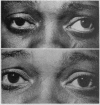Abstract
Of two patients who had acute neurologic damage from cisternal punctures, one died 17 hours following a tap which produced major subarachnoid hemorrhage, the other patient recovered from probable brain stem infarction associated with cisterna magna amphotericin injection.
Subarachnoid hemorrhage is the commonest major complication of cisternal puncture, with at least 30 reported fatalities. Other serious complications result from direct puncture of brain substance.
Cisternal puncture is not an appropriate alternative to a difficult lumbar puncture, and indications for its use are limited. The occasional required cisternal tap should be performed only by persons carefully trained in the technique, preferably utilizing fluoroscopic guidance, and only where neurosurgical assistance is readily available.
Post-puncture subarachnoid hemorrhage accompanied by progressive obtundation requires emergency evaluation and consideration of posterior fossa decompression.
Full text
PDF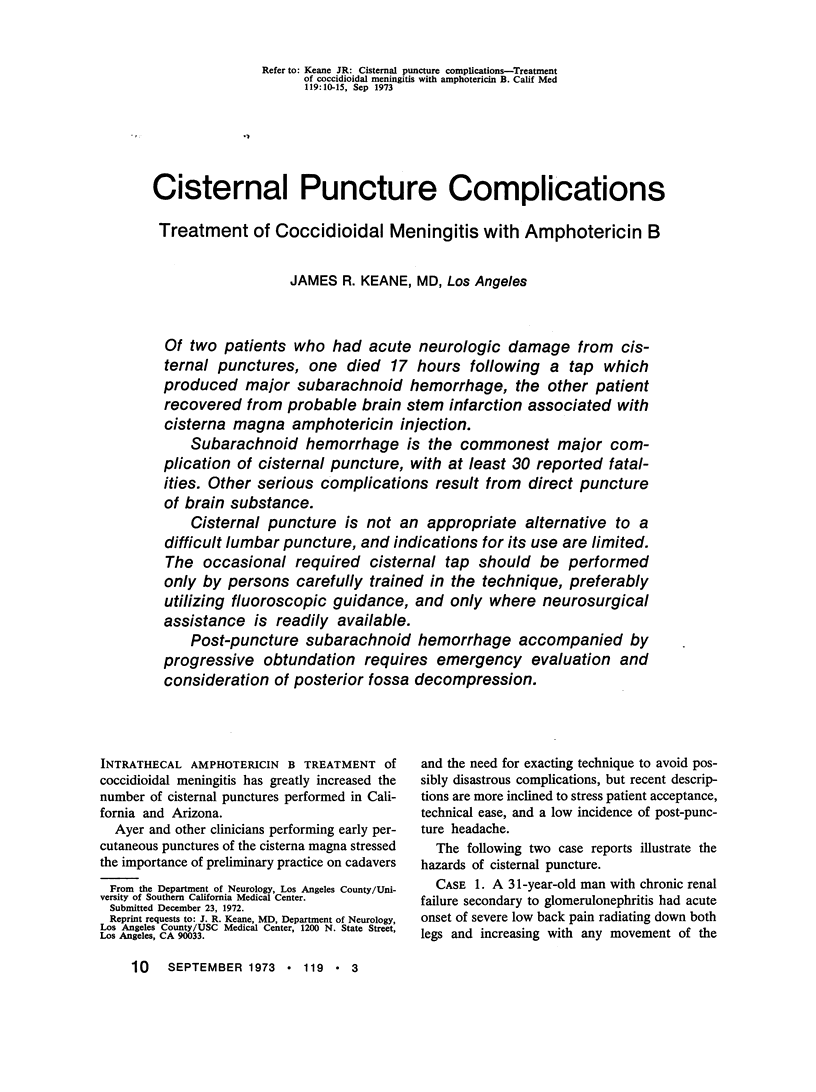
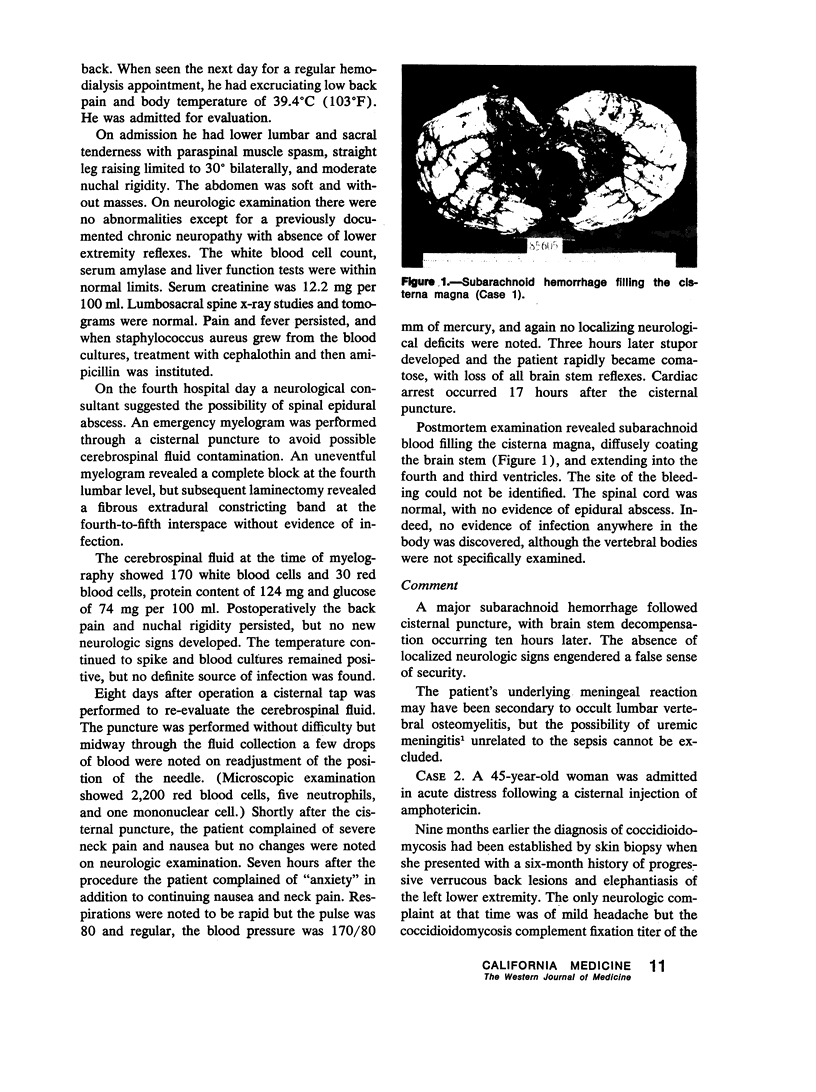
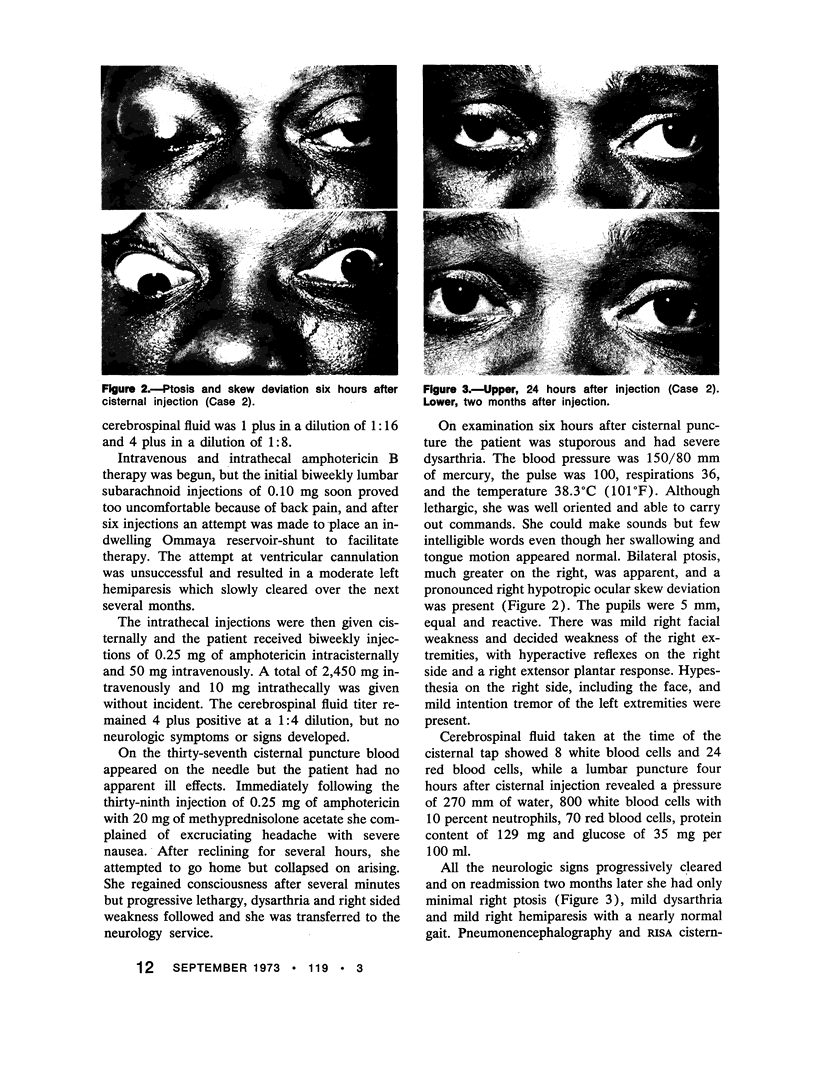
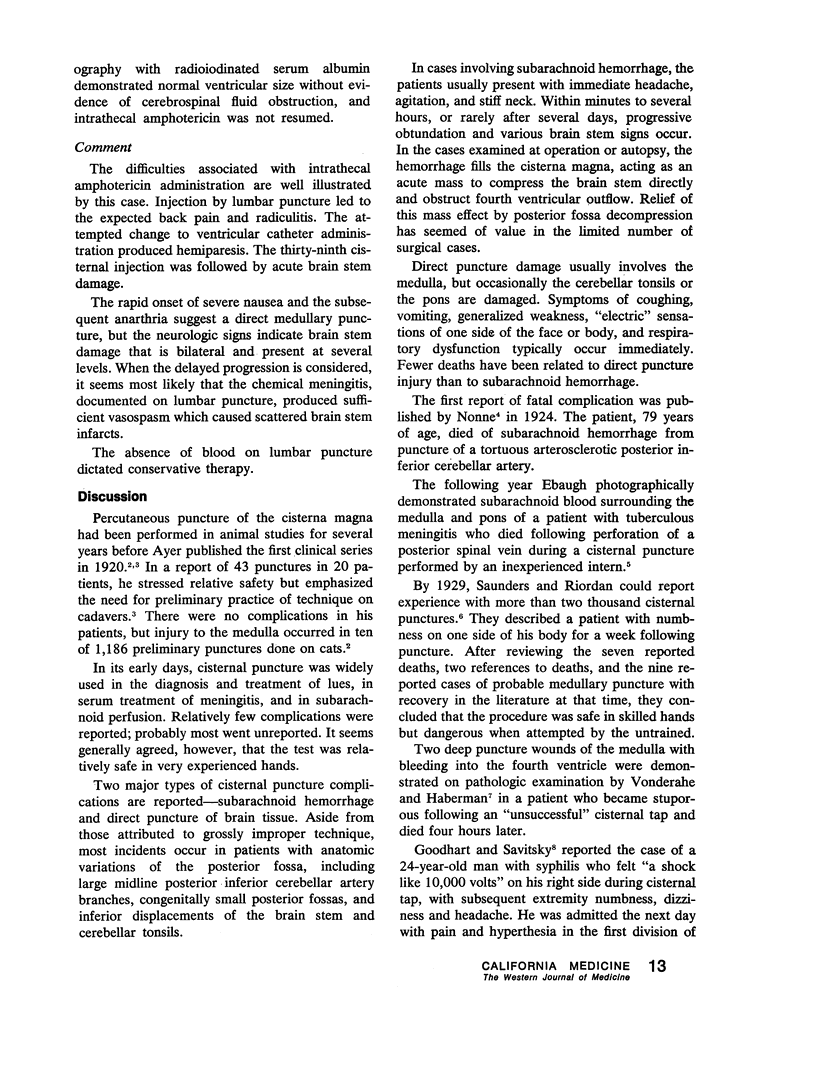
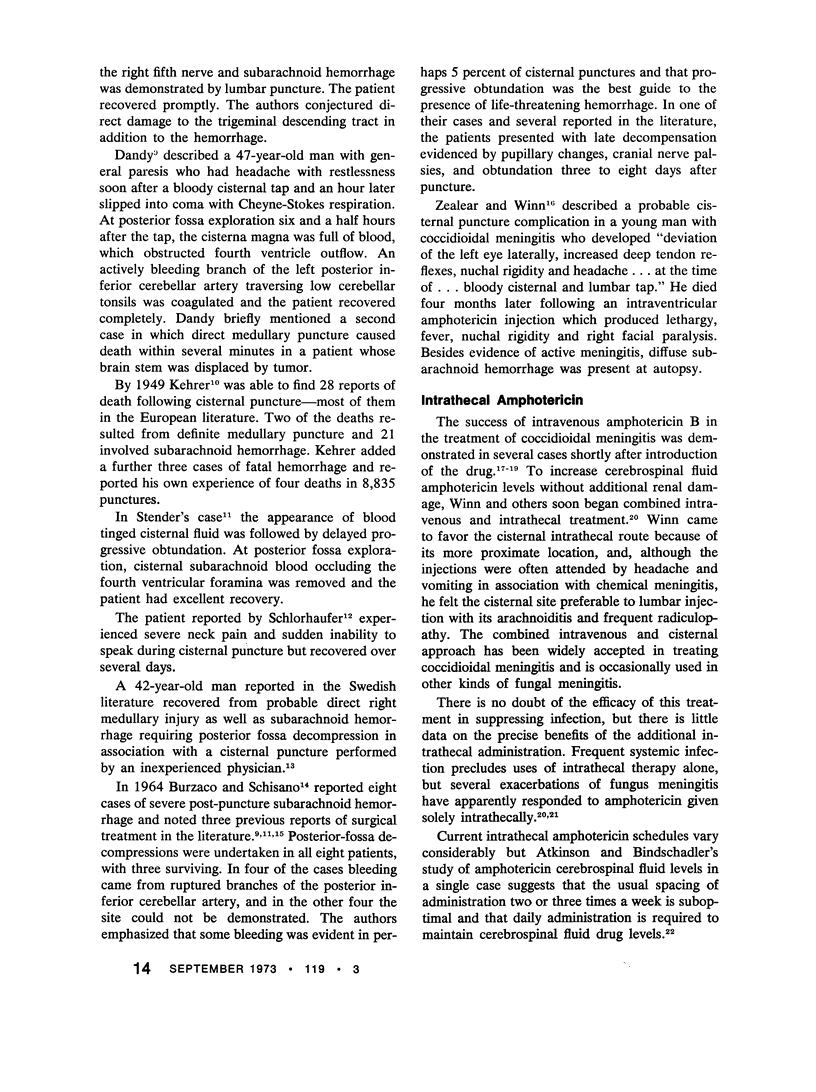
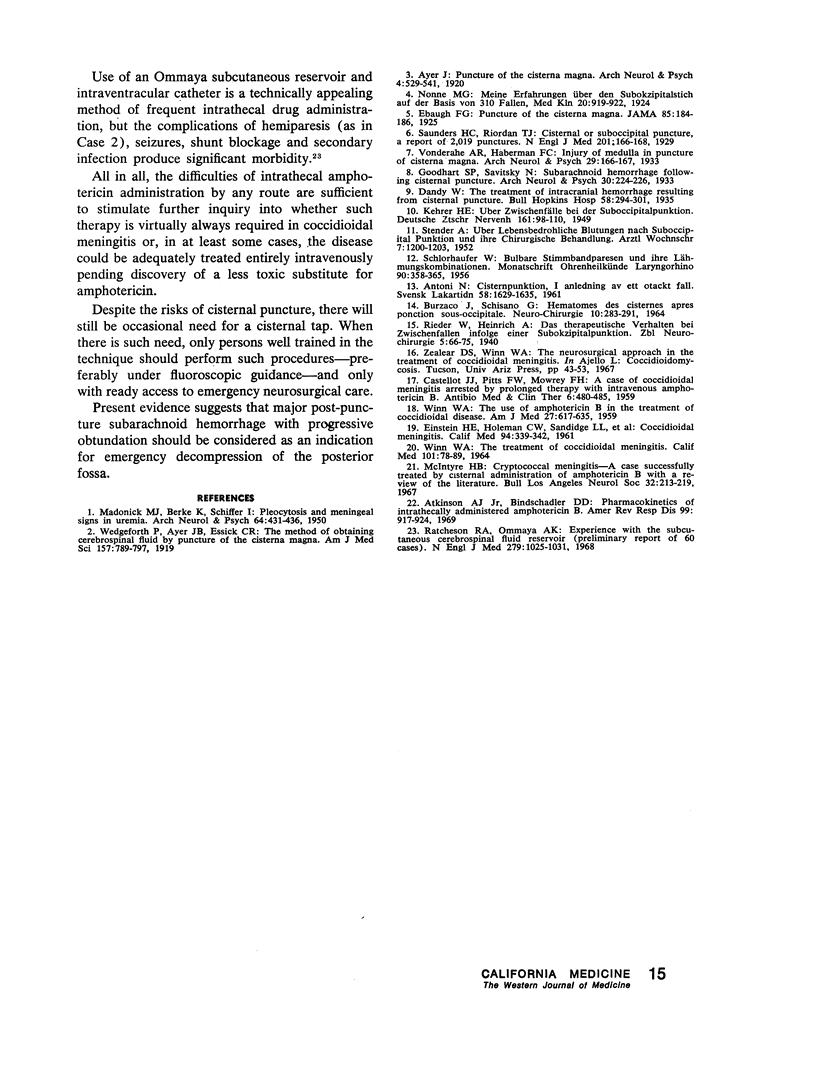
Images in this article
Selected References
These references are in PubMed. This may not be the complete list of references from this article.
- ANTONI N. [Cisternal puncture. In connection with a bad case]. Sven Lakartidn. 1961 Jun 2;58:1629–1635. [PubMed] [Google Scholar]
- Atkinson A. J., Jr, Bindschadler D. D. Pharmacokinetics of intrathecally administered amphotericin B. Am Rev Respir Dis. 1969 Jun;99(6):917–924. doi: 10.1164/arrd.1969.99.6.917. [DOI] [PubMed] [Google Scholar]
- BURZACO J., SCHISANO G. H'EMATOMES DES CITERNES APR'ES PONCTION SOUS-OCCIPITALE. Neurochirurgie. 1964 May-Jun;10:283–291. [PubMed] [Google Scholar]
- CASTELLOT J. J., PITTS F. W., MOWREY F. H. A case of coccidioidal meningitis arrested by prolonged therapy with intravenous amphotericin B. Antibiotic Med Clin Ther (New York) 1959 Aug;6:480–485. [PubMed] [Google Scholar]
- EINSTEIN H. E., HOLEMAN C. W., Jr, SANDIDGE L. L., HOLDEN D. H. Coccidioidal meningitis. The use of amphotericin B in treatment. Calif Med. 1961 Jun;94:339–343. [PMC free article] [PubMed] [Google Scholar]
- MADONICK M. J., BERKE K., SCHIFFER I. Pleocytosis and meningeal signs in uremia; report on 62 cases. Arch Neurol Psychiatry. 1950 Sep;64(3):431–436. doi: 10.1001/archneurpsyc.1950.02310270120007. [DOI] [PubMed] [Google Scholar]
- McIntyre H. B. Cryptococcal meningitis. A case successfully treated by cisternal administration of Amphotericin B with a review of recent literature. Bull Los Angeles Neurol Soc. 1967 Oct;32(4):213–219. [PubMed] [Google Scholar]
- Ratcheson R. A., Ommaya A. K. Experience with the subcutaneous cerebrospinal-fluid reservoir. Preliminary report of 60 cases. N Engl J Med. 1968 Nov 7;279(19):1025–1031. doi: 10.1056/NEJM196811072791904. [DOI] [PubMed] [Google Scholar]
- SCHLORHAUFER W. Bulbäre Stimmbandparesen und ihre Lähmungskombinationen nach Subokzipitalpunktion und beim Wallenbergschen Syndrom. Monatsschr Ohrenheilkd Laryngorhinol. 1956 Dec;90(6):358–365. [PubMed] [Google Scholar]
- STENDER A. Uber lebensbedrohliche Blutungen nach Suboccipitalpunktion und ihre chirurgische Behandlung. Arztl Wochensch. 1952 Dec 19;7(51):1200–1203. [PubMed] [Google Scholar]
- WINN W. A. THE TREATMENT OF COCCIDIOIDAL MENINGITIS. THE USE OF AMPHOTERICIN B IN A GROUP OF 25 PATIENTS. Calif Med. 1964 Aug;101:78–89. [PMC free article] [PubMed] [Google Scholar]
- WINN W. A. The use of amphotericin B in the treatment of coccidioidal disease. Am J Med. 1959 Oct;27:617–635. doi: 10.1016/0002-9343(59)90046-4. [DOI] [PubMed] [Google Scholar]





